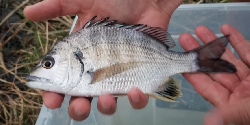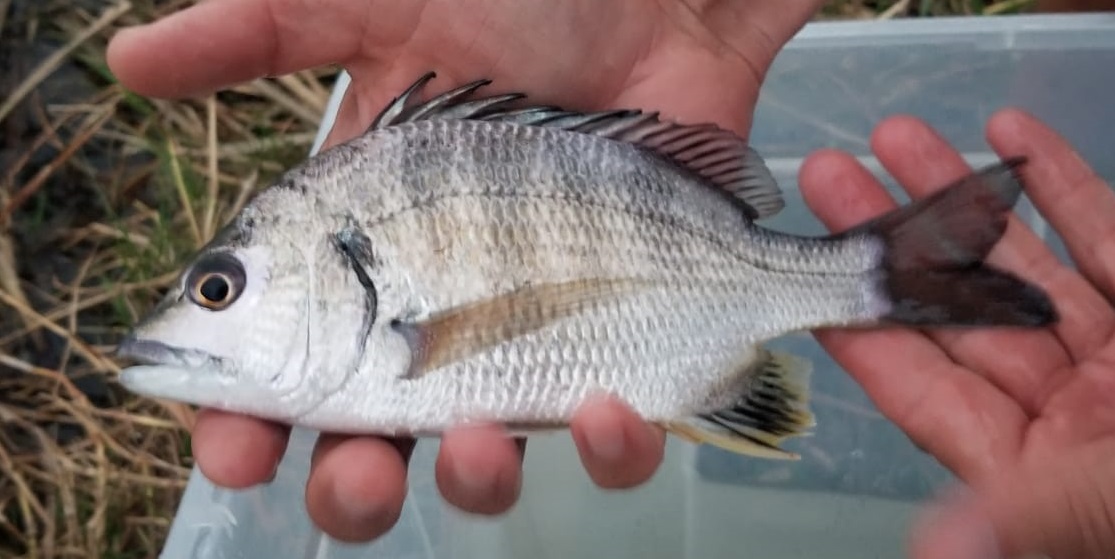Acanthopagrus vagus (Peters, 1852)
Description
Dorsal spines (total): 11; Dorsal soft rays (total): 10 - 12; Anal spines: 3; Anal soft rays: 8. Diagnosis: This species is distinguished from its congeners of by the following characters: 3.5 scale rows between fifth dorsal-fin spine base and lateral line; front edge of dorsal scaly area on head (dorsal view) with a median W-shaped scaleless area and with small scales present just before an oblique temporal row of larger scales; 44-46 pored lateral-line scales; second anal-fin spine (2AS) slightly longer than third anal fin spine (3AS), ratio 2AS/3AS 5 1.15-1.45 (mean 1.25); ventral edge of first two infraorbitals straight in specimens less than 23 cm SL, weakly concave in specimens more than 25 cm standard length; preopercle flange with 0-6 scales, number increasing with growth and is obvious in specimens over 20 cm standard length ; black streaks near anal-fin base on interradial membranes between rays; both jaws with well developed molariform teeth (Ref. 83673).
Taxonomic Hierarchy
Kingdom: Animalia
Phylum: Chordata
Class: Teleostei
Order: Eupercaria/misc
Family: Sparidae
Genus: Acanthopagrus
Species: Acanthopagrus vagus (Peters, 1852)
Climate Zone
Location
Biology
Adults and juveniles found in estuaries and in freshwater (Ref. 58304).
Habitat
freshwater
Conservation Status
Vulnerable
Threat to Humans
Harmless

